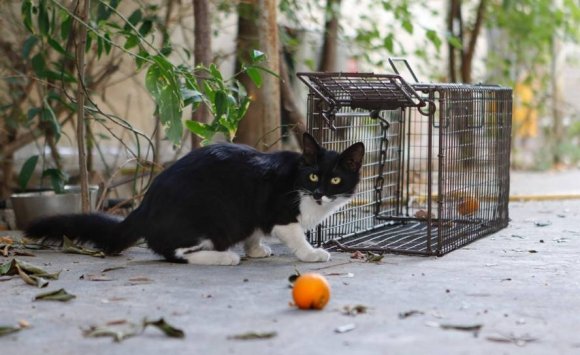Cyprus, a country overcrowded with cats and the challenge of having to feed them
It is estimated that the number of felines living on the European island is counted in hundreds of thousands. British volunteers say they spend around 2,100 euros per month so they do not die of hunger.
Legend has it that the Roman Empress Helena brought cats to Cyprus to get rid of the snakes. Centuries later, the population of these felines experiences a growth that is difficult to control.
After the end of a government sterilization program five years ago, many volunteers from the Mediterranean island try to feed the many cats, sometimes resorting to their own resources.
In the Tala Monastery Cat Park, in the region of Pafos (southwest), British volunteers claim to spend about 2,100 euros a month, from donations, to feed these animals.
The refuge reached its reception limit this season, says founder Dawn Foote. "Something must change, in two years, we will not be able to do it," he continues.
In Cyprus, an island of one million inhabitants, there are hundreds of thousands of cats, says Dinos Agiomamitis, which runs Cat PAWS Cyprus, an association for the protection of these animals.
According to a veterinarian consulted by the AFP, a sterilization campaign is essential to limit the expansion of felines, taking into account that a cat can give birth to eight pups per year.
But in 2011, the state, which began to limit its spending in the face of a serious financial crisis, suspended a program that cost 50,000 euros a year to sterilize 1,700 cats, explains Agiomamitis. "They have not done anything in the last five years ... Imagine how many kittens they represent!" He adds.
Reduction bonds for sterilizations
Since the end of the program, the funds granted to public veterinary services, explains his boss Christodoulos Pipis, focus on problems with a greater impact on the country's economy, such as diseases that affect livestock.
In order to encourage the Cypriots, very punished by the crisis, to control the births of cats, the association of Agiomamitis distributes reduction vouchers for sterilizations in collaborating veterinary clinics.
It also helps the City Council to catch cats that have not been sterilized.
Under an orange tree, an elegant black and white cat observes the food that has been left at the entrance of a metal cage.
"If she gives food to 10 cats in her neighborhood and (...) does not sterilize them, very soon" she will have dozens, warns Agiomamitis, while waiting for the cat to approach the bait.
The cat enters the cage and the trap closes over it. Shortly after, in the pick-up of Agiomamitis, he joins seven other cats trapped in the same way, heading to the veterinary clinic.
In the center of Nicosia, many cats roam the streets and in the vicinity of restaurants, and tourists scare away those who come too close to their dishes.
Although the myth of the Empress Helena is well known in Cyprus, the French archaeologist Jean-Denis Vigne says that the presence of cats in Cyprus dates back to much before the fourth century.
Excavations in Neolithic villages allowed to find remains of cats and showed that their domestication took place on the island thousands of years before Christ, says the scientist.
Mouse hunters
The oldest remains were discovered in 2013, in the village of Klimonas, near the southern city of Limasol, and date from between 9,000 and 8,600 BC. C., according to Vigne.
"Cats were introduced in Cyprus (...) to hunt mice," he explains. "We know that the accumulation of grain reserves attracted mice a lot in the villages."
Without hope of a new sterilization campaign, some Cypriots like Agiomamitis have decided to take care of this population.
This bricklayer says that his wife and he spend between 600 and 700 euros per month in this activity, a challenge for them, since he has few clients at the moment and she, a music teacher in a public center, lost part of her salary because of the austerity measures voted by the Government.
Before dawn, Agiomamitis enters a cemetery in the light of a flashlight, and leaves five plates full of food on the floor, while dozens of catlike eyes shine in the dark.

Photo: AFP
